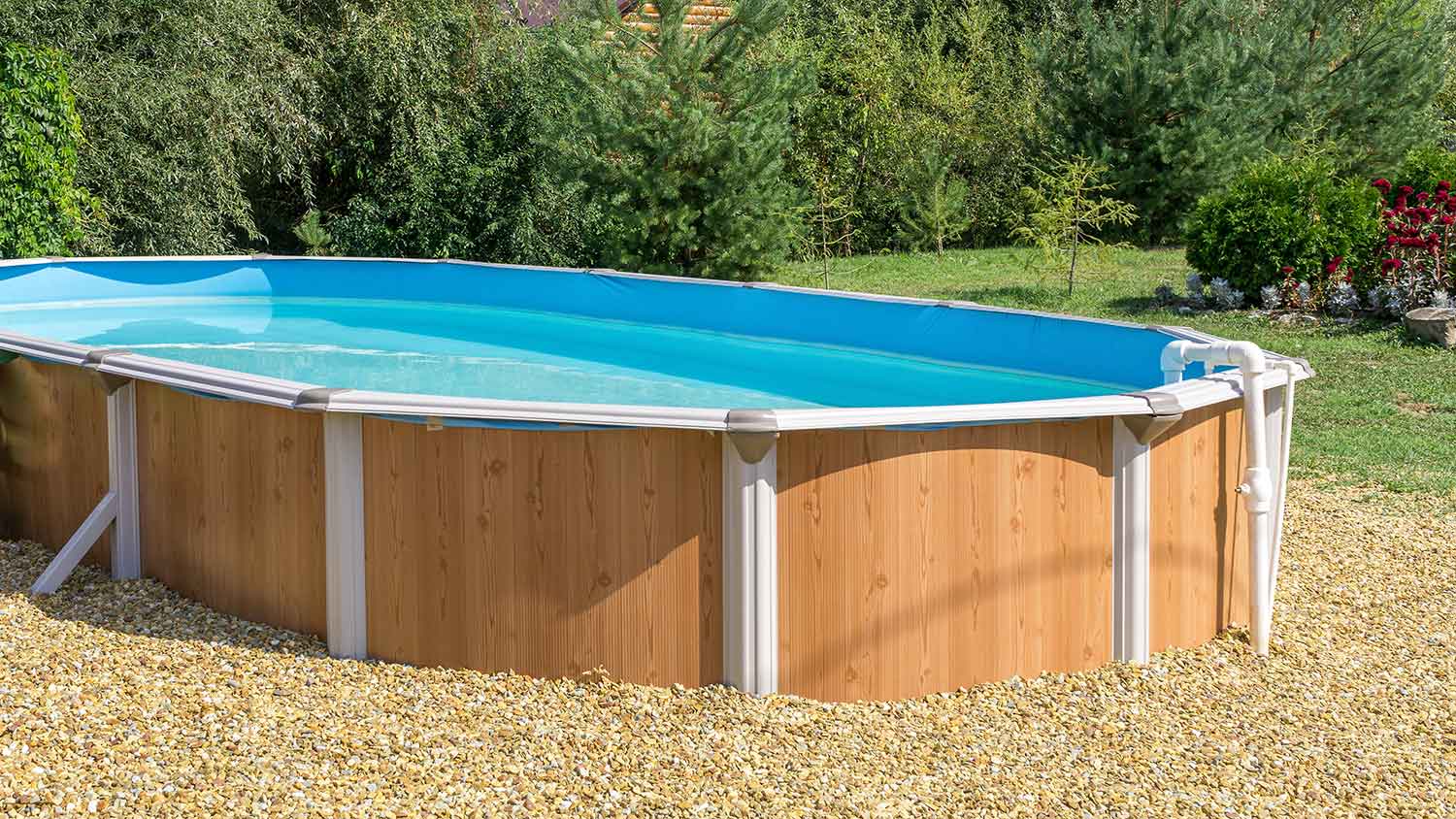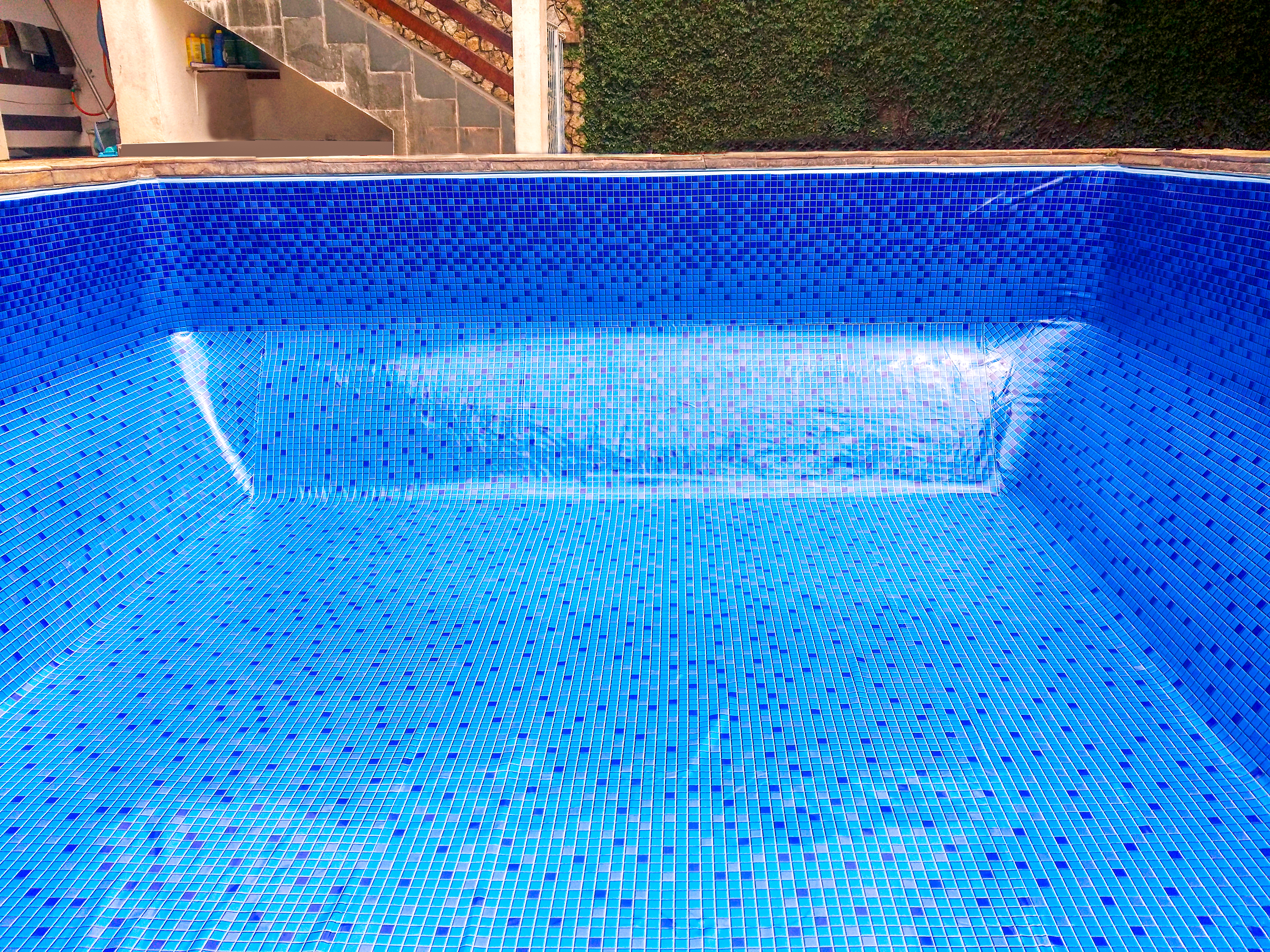
If you’ve been considering installing a new pool in the Buckeye State, this guide will help you understand inground pool costs in Columbus.
Get your pool project off the ground


True above ground pools aren’t made to withstand the inward pressure from soil and shouldn’t go in the ground.
Burying an above ground pool is often safe up to a certain shallow depth, but always refer to the manufacturer’s specifications.
Semi-above ground pools are slightly more expensive but are safe to bury to greater depths.
Whether you’re looking to save money or have landscaping constraints, it might be tempting to buy an above ground pool and simply install it below ground. But, can you put an above ground pool in the ground safely? The short answer is that you sometimes can—generally not more than a foot or two, though—but you should typically avoid it. In this guide, we’ll explain everything you need to know about putting an above ground pool in the ground and provide a simple alternative that’s much safer and still more affordable than an inground pool.

Most above ground pools include specifications for partially burying them without voiding the warranty or putting swimmers at risk of injury. You should always check with your pool’s manufacturer for the specific depth, but it’s usually only up to around two feet, meaning a good portion of your pool will still stick out above the ground.
It’s not safe to put an above ground pool fully in the ground. We’ll get into specifics regarding why that’s the case below, but know that you’ll not only void your pool’s warranty but also increase the risk of your pool collapsing. If this occurs when family members or friends are swimming, they could get severely injured.
There are a few reasons homeowners might want to bury an above ground pool:
To save money. One of the reasons burying an above ground pool is appealing is because it opens the door for a DIY excavation and pool installation. On average, the cost of an inground pool is around $50,000, while the average cost of an above ground pool is just $4,000.
To match the pool height to an existing deck. If you have an elevated deck or patio in your yard, you might want it to line up perfectly with the top of your pool. That might not work out with an inground pool, but burying an above ground pool would give you more flexibility.
To accommodate sloped land. Installing an inground pool on sloped land isn’t possible, so some homeowners consider partially burying an above ground pool to accommodate the slope. You could also hire a pro to level your land for a pool, but this can get extremely expensive.
We’ll reiterate that installing an above ground pool in the ground—even partially in the ground—usually isn’t a good idea. However, there is another option, which we’ll discuss at the end of this article.
There are a few reasons you should avoid putting an above ground pool in the ground, the most important of which have to do with safety.
First and foremost, burying an above ground pool puts undue strain on the pool walls that could cause them to collapse inward, putting anyone inside the pool at risk. The walls of an above ground pool are designed to withstand outward pressure from the water, but they won’t stand up as well to inward pressure from the soil.
If that inward pressure becomes too much for the pool to handle, the walls will collapse, leaving you with a mess of a yard and, potentially, severe injury to anyone in the pool.
Above ground pools often have through-wall skimmers and filters that are meant to sit above the ground. When you put an above ground pool in the ground, that equipment will sit at least partially below the surface. If the equipment isn’t made to stand up to the weight of the soil or function underground, you risk damaging it beyond repair.
Finally, inground pools are made to stand up to constant exposure to moisture and soil, while above ground pools typically aren’t. The walls are more likely to corrode from the outside inward over time, especially if you have acidic soil or clayey soil that holds moisture.
This limits the lifespan of your pool, potentially eliminating any savings you’d see upfront, especially if you’re then faced with the cost to remove your pool and install a new one properly.
While it’s not advisable to bury an above ground pool, you can buy and bury a semi-above ground pool. Semi-above ground pools differ in a few important ways that make them safe to bury or partially bury to suit your needs while still saving money over a standard inground pool. These include the following:
Reinforced walls. Most importantly, semi-above ground pools have stronger walls that will resist both the outward pressure from the water and the inward pressure from the surrounding soil. This alleviates the risk of the pool collapsing after installation.
Protective coating on the outside walls. Pools designed to sit fully or partially underground have protective coatings on the outside of the walls to prevent corrosion from acidic soil and constant exposure to moisture in the ground.
Different setup for pool equipment. Semi-above ground pools often come with higher-end pool equipment and a different setup for skimmers that are designed to sit underground. This eliminates the risk of damage to your equipment from the weight of the soil.
Semi-above ground pools cost more than above ground pools but far less than inground pools. And the extra cost is worth it to ensure the safety of your family and the longevity of your pool.
No matter which direction you go, we recommend contacting an above ground swimming pool company near you to make sure your pool is installed safely and comes out looking great.
Raven and crew does absolutely fantastic job. They are very professional if any concerns were to occur with any of her work she always took responsibility and finished out with a great job. I have worked with her business for a year and have always been satisfied. Very trusted business and...
I had Ace Fireplace Services install custom chimney caps for my home, and the results are stunning. They fit like a glove and have added a touch of sophistication to my chimney. I can't recommend their services enough.
Precision and professionalism define Custom Paint Jobs LLC. We couldnt be happier.
Very professional and efficient with work. Answered each question I had with great knowledge and an informative response. Will be working with them again.
I first met Ilia when windows were installed on my new back porch. He was extremely conscientious about getting the job done right and it was. Now I ve had all the windows of two levels of my house completed by him.....ON TIME, ON BUDGET, TO MY TOTAL SATISFACTION. I'm a happy customer.
Great tree company, very professional and honest. Glad we found them, they had the best pricing
AFS was excellent from start to finish. Jess, the sales associate, was fantastic...very knowledgeable and very professional. The installation crew was excellent. I couldn't be more pleased with the process. Best of all, my new floor looks fantastic!
Maple Tree Service should serve as a mentor for other business! Customer service was superior and beyond expectation. Response to request was prompt. The representative was very courteous and proud of the company. Quote was given during initial visit and work date established. A follow up...
Eugene returned my call within minutes and was able to complete the job within a couple of days. Friendly and professional, and I feel his prices are reasonable.
Our movers on November 25, 2020 were Lamar (#1897) and Dame (#1929), and they did a FABULOUS job. The guys were so helpful, accommodating and friendly. They worked diligently and got the job done in a very reasonable period of time. We were extremely impressed! This was our third or forth...
From average costs to expert advice, get all the answers you need to get your job done.

If you’ve been considering installing a new pool in the Buckeye State, this guide will help you understand inground pool costs in Columbus.

The cost of pool liner replacement in Columbus depends on the size and shape of your pool, as well as the liner material and type. Here’s how the costs break down.

Fiberglass pools are a solid choice. If you are looking into installing one at home, read this guide to learn all the ins and outs of fiberglass pool costs.

Elevate your swimming experience with a DIY pool heater. This guide includes four methods for using the sun's energy to warm your water.

If your water has high calcium hardness, it's important to learn how to lower calcium hardness in your pool water to avoid corrosion that can harm your pool's plumbing.

When a murky mess interrupts your morning laps, you need to know how to clear cloudy pool water fast. These top cloudy water fixes will keep you afloat.